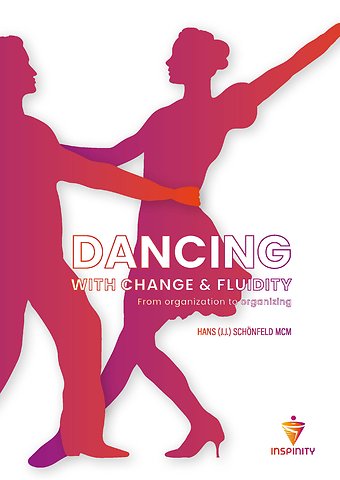
Lees verder



Ik ben een meester in transformatie van gerichtheid op de organisatie naar organiseren. Ik schrijf, inspireer en adviseer over (gevolgen van toenemende) fluïditeit aan de ene kant en elementaire emoties binnen organisaties (geluk, verdriet, liefde, haat, angst <FOMO>, schaamte en jaloezie <inclusief the Good Opinion Of Other People) aan de andere kant.
Meer over Hans SchönfeldAt the end of his remarkable career, Hans Schönfeld reflects in this book on a theme more relevant than ever: fluidity. This concept, representing the blurring of boundaries and the need to adapt to rapid change, impacts individuals and organizations. Boundaries that were once fixed, social, organizational, biological, and technological, are becoming increasingly fluid, with far-reaching consequences.
Schönfeld bridges theory and practice, making fluidity both recognizable and actionable. How can leaders lead in these dynamics? What skills are essential in a world of constant change? Schönfeld provides practical tools and concludes with ten commandments for leaders, encouraging them to embrace rather than resist fluid developments.
This book is an indispensable guide for anyone who seeks to learn, adapt, and keep pace with the times. Whether you are an experienced leader or a newcomer to change, this book offers valuable insights and inspiration. I recommend this book to everyone striving to stay ahead, but I also hope it will be read by leaders who cling to rigid structures and resist adaptation. They may oppose its content, but perhaps they are the ones who need it the most.
Prof. Dr. Hans Mulder
verandering fluïditeit organisatieverandering leiderschap adaptatie ambidexteriteit organiseren digitale fitheid grensvervaging innovatie verandermanagement technologische verandering sensemaking liquid modernity identiteit ecosysteem wereldbeeld besluitvorming dansen mindset netwerksamenleving tool set gedrag complexiteit skill set continuïteit cobots toekomst contextgevoeligheid samenwerken

U kunt van deze inhoudsopgave een PDF downloaden
Heb je jouw boeken niet meer nodig?
Als je jouw studieboeken gekocht hebt bij hanzestudybook.nl, kun je geselecteerde titels moeiteloos terugverkopen aan Noordhoff. Geen vragen, geen gedoe en lekker duurzaam.
Een AI-book is niet een boek dat geschreven is door AI maar een boek dat verrijkt is met AI. Het maakt de inhoud van een boek interactief via WhatsApp, zodat je ermee kunt chatten. Zie het als een razend slimme assistent die het boek perfect begrijpt en er alles uit onthouden heeft. Jij kunt deze assistent alles vragen. Vraag bijvoorbeeld hoe je iets kunt toepassen op jouw persoonlijke situatie, om een korte samenvatting, of wat de belangrijkste inzichten zijn. AI-books zijn alleen te gebruiken via WhatsApp, je hoeft er geen aparte app voor te installeren.
Meer informatie over AI-books